Closing the employment gap will require 880,000 part-time roles, at least ten times the current number of suitable vacancies
By Arun Veerappan - Research Director
Latest DWP and ONS data shows that 1 in 3 disabled people in work are part-time
The latest annual releases from the Department of Work and Pensions, alongside quarterly labour market data from the Office for National Statistics (ONS), has allowed us to dig further into how disabled people work.
Disabled people are more likely to be self-employed, work in the public sector or smaller organisations, and more likely to be in junior roles: all factors we have highlighted in our employment paper here.
However, the data shows that nearly a third (31%) of the 5.6 million disabled people currently in work, are doing so part-time (DWP, 2025, ONS, 2025).
This suggests closing the employment gap will require 880,000 new part-time roles, at least ten times the level of current suitable vacancies
The disabled employment gap, which measures the 28% difference between disabled and non-disabled employment rates, is often used a policy goal (ONS, 2025). This is because firmly closing it would support 2.8 million disabled people into work, and help achieve the government’s target for an 80% employment rate overall (DWP, 2025).
Of course, to reflect the preferences of UK disabled workers, this would equate to 880,000 new part-time jobs. This exceeds the 736,00 job vacancies in the whole labour market as of May 2025 (ONS, 2025).
Whilst a quarter of workers are currently part-time, flexibility is often given to existing employees rather than new hires. Time Wise, a non-profit organisation looking to address workplace flexibility, found that only 12% of jobs advertised in the UK in 2023 were part-time (once excluding temporary or freelance posts), declining to 7% for jobs above £35K.
Altogether, this implies we need ten times more part-time jobs than the market currently offers to close the employment gap; more if we want disabled people in good paying jobs. This is likely to be an underestimate too, as the DWP’s (2025) commissioned survey of 3,000 welfare claimants released earlier this year found that 2/3rds (66%) felt they needed part-time roles to return to the workforce. Under this view, assuming barriers are more substantial than for those currently working, we would need twice as many part-time vacancies, twenty times current levels offered by the market.
Policy should incentivise part-time job creation and recognise how networks of support keep disabled people in work
Rather than cajoling disabled people into work, policy should therefore create stronger incentives for employers to introduce part-time hiring. In our employment paper, we suggest that employer NI incentives for inactive hires, or that any future corporation tax raises exclude firms that deliver on part-time and flexible working, would help create a more inclusive hiring framework.
The latest ONS (2025) and DWP (2025) data also recognises, as we have previously found, that support networks, care and education matter too. Disabled people are a third more likely to be in work if in a couple. Equally the disabled employment gap stretches to 40.3% if a person is in social housing, and narrows to 11.9% adjusting for degree holders. This suggests policy can’t just focus solely on employment and reforming job centres, but must also think about social care, welfare, housing and education all work together to help disabled people stay in work too.
Latest data shows policy must also focus on career progression and leadership too, where we find 268,000 disabled managers and leaders missing from the workforce
Finally, the DWP’s data also suggests just under a tenth (9.1%) of workers are underemployed, compared to 6.7% for non-disabled people, as well as more likely to be in low pay (17% vs 12% respectively).
This reflects our latest research, following conversations with disabled CEOs here, that disabled people also face an underpromotion gap; costing them £4.2bn in lost earnings each year. In fact, where disabled people are under-represented in senior roles, our analysis has found that there over a quarter of a million (268,000) disabled managers and senior leaders are effectively missing from our workforce.
This indicates whilst more part-time jobs are important, we must also focus on how to support disabled people in their careers, particularly if they work flexibly, so they can advance and succeed in their work too.
References
Department for Work and Pensions. 2025. The Employment of Disabled People 2024. Last updated June 20, 2025. https://www.gov.uk/government/statistics/the-employment-of-disabled-people-2024/the-employment-of-disabled-people-2024. gov.ukgov.uk
Department for Work and Pensions,. 2024. Get Britain Working: White Paper. Published 26 November 2024. Accessed 23 July 2025. https://www.gov.uk/government/publications/get-britain-working-white-paper/get-britain-working-white-paper
Department for Work and Pensions. 2025. New survey suggests benefits system is letting down people with mental health conditions who want to work. News release, 6 February 2025. Accessed 23 July 2025. https://www.gov.uk/government/news/new-survey-suggests-benefits-system-is-letting-down-people-with-mental-health-conditions-who-want-to-work gov.uk
Office for National Statistics. 2025. A08: Labour Market Status of Disabled People. Dataset published 13 May 2025. Accessed 23 July 2025. https://www.ons.gov.uk/employmentandlabourmarket/peopleinwork/employmentandemployeetypes/datasets/labourmarketstatusofdisabledpeoplea08
Office for National Statistics. 2025. Vacancies and Jobs in the UK: June 2025. Statistical bulletin, released 10 June 2025. Accessed 23 July 2025. https://www.ons.gov.uk/employmentandlabourmarket/peopleinwork/employmentandemployeetypes/bulletins/jobsandvacanciesintheuk/june2025
Timewise. 2023. Timewise Flex Jobs Index 2023. Published November 2023. Accessed 23 July 2025. https://timewise.co.uk/wp-content/uploads/2023/11/Timewise-Flex-Jobs-Index-2023.pdf
